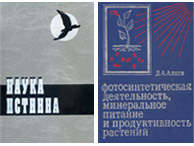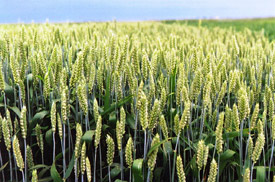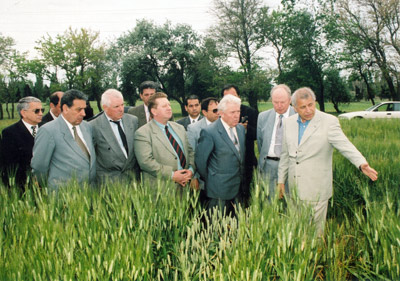
Last news
[20.06.2008]НАУЧНЫЙ РУКОВОДИТЕЛЬ И КОНСУЛЬТАНТ ДИССЕРТАНТОВ
[20.06.2008]НАУКА
ИСТИННА
[20.06.2008]Awards
[20.06.2008]Brief essay on scientific activity of Professor JALAL ALIYEV
[17.06.2008]Список книг Д.А.Алиева
Announcements
20.06.2008
On June 27, 2008 the talk of famous Japanese scientist in the field of photosynthesis, Professor Murata N. will be held in the Institute of Botany.
20.06.2008
On June 25, Tarlan Mammadov Hazarpasha oglu will defend his dissertation entitled "Identification, characterization and ... →
20.06.2008
The International Conference and Workshop on "Bioinformatics: Current Progress and Practical Applications" devoted to the 80th anniversary of J. Aliyev... →
Scientific achivements

НАУКА ИСТИННА
20.06.2008
(Документальная хроника)
В тяжелое для страны время политических игр трудный путь борьбы академика Джалала Алиева во имя принципов чистоты науки и торжества истины →
13.06.2008
ORIGIN: The variety was released at Research Institute of Agriculture crossing local "Garagylchyk" cultivar with "Norin-10" by a multistage selection. →
7.06.2008
Д.А.Алиев. Влияние микроэлементов на некоторые физиологические процессы и урожайность озимой пшеницы. →
News
Elevated Carbon Dioxide Boosts Invasive Nutsedge
Elevated levels of carbon dioxide (CO2) could promote the growth of purple and yellow nutsedge—quick-growing invasive weeds that plague farmers and gardeners in many states. That's the conclusion of plant physiologist Hugo Rogers and his colleagues at the Agricultural Research Service (ARS) National Soil Dynamics Laboratory (NSDL) in Auburn, Ala.With ARS and Auburn University colleagues, Rogers grew purple nutsedge (Cyperus rotundus L.) and yellow nutsedge (C. esculentus L.) in chambers designed to mimic the atmospheric CO2 levels predicted to occur within the next century—about twice existing levels. They found that both species benefited from elevated CO2, particularly purple nutsedge.
Although neither species is native to the United States, purple and yellow nutsedge can be found all over the country. Purple nutsedge can tolerate extremely high temperatures and is a major problem in the southern United States, whereas yellow nutsedge is better suited to more temperate climates. Both species displace native plants and reduce yields in a variety of important agricultural crops, including corn, cotton and rice. Purple and yellow nutsedge spread via rhizomes and underground tubers, and are extremely difficult to control.
The Auburn scientists observed that both species grew larger in the elevated CO2 chambers than in control chambers. The plants had more tubers and greater water use efficiency, indicating that they could become increasingly competitive in an elevated-CO2 environment. This could result in reduced crop yields and displaced native flora.






